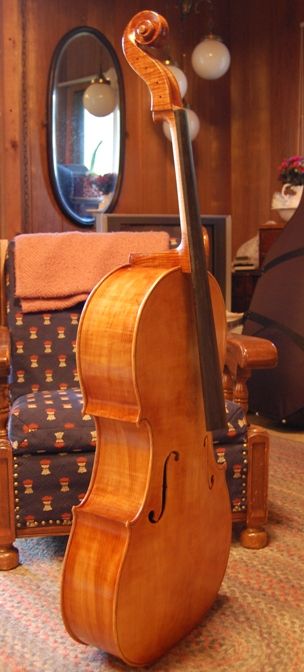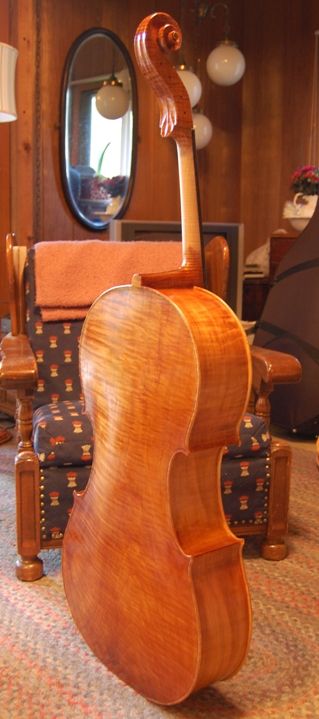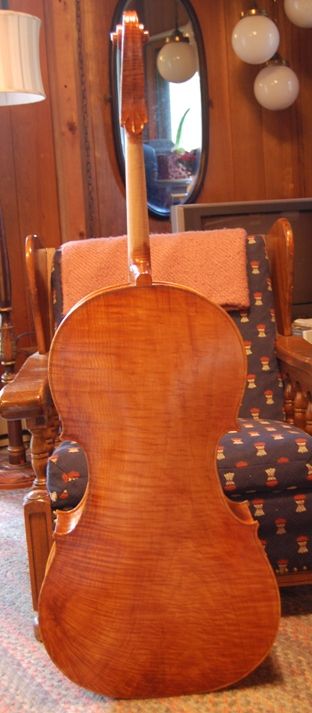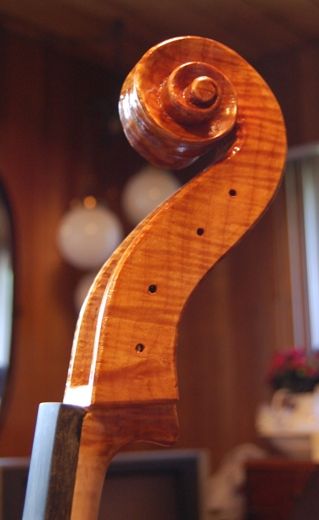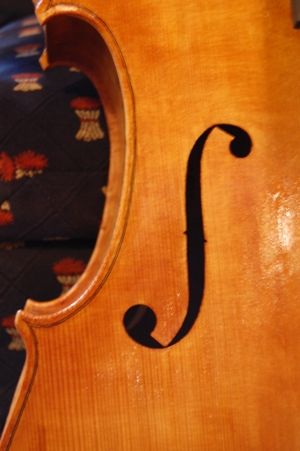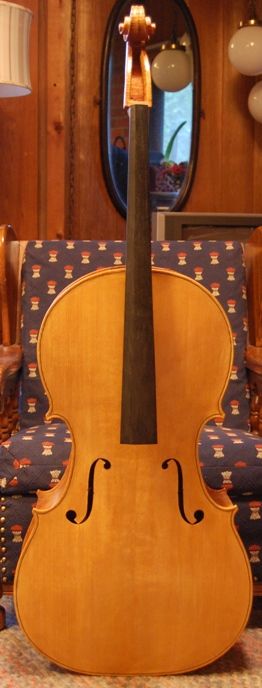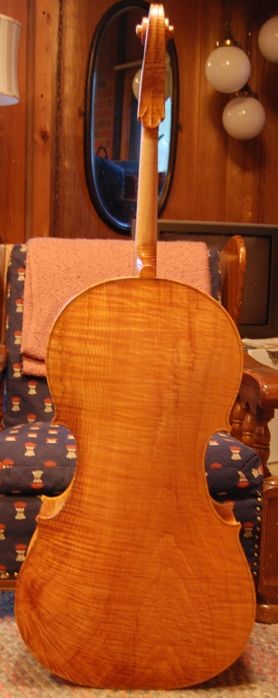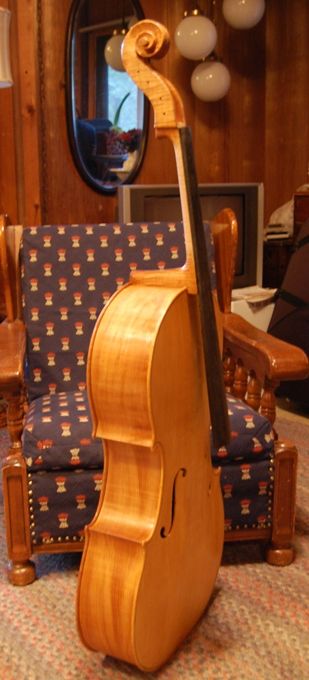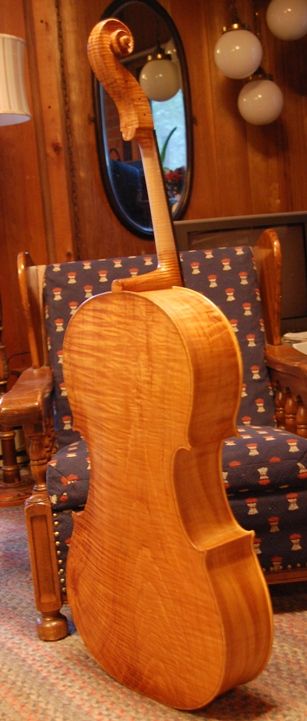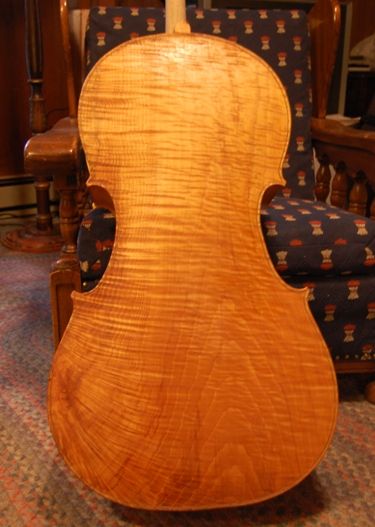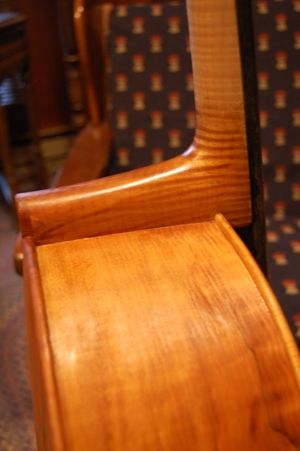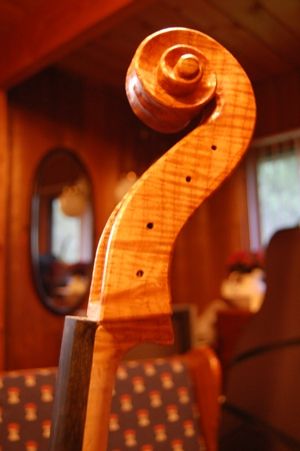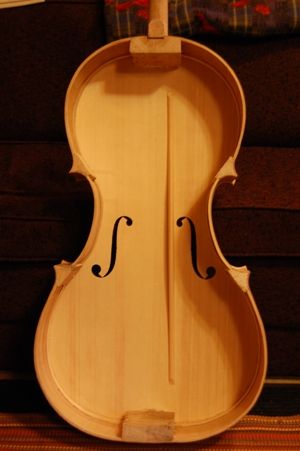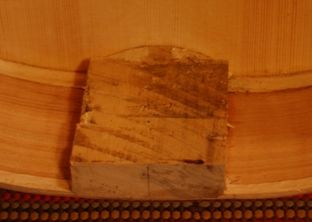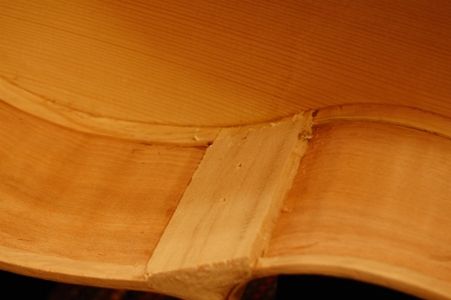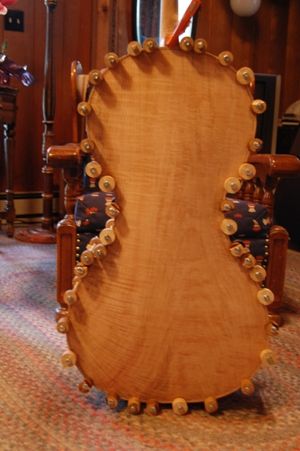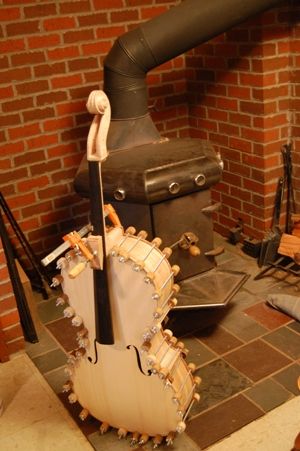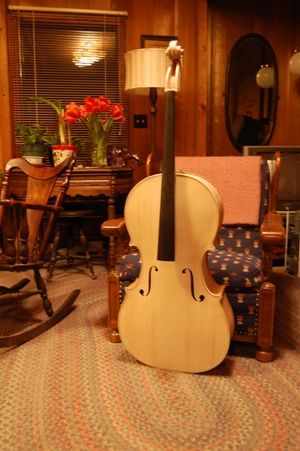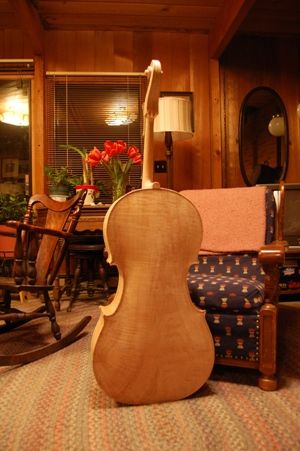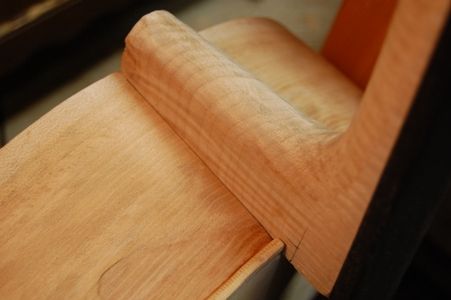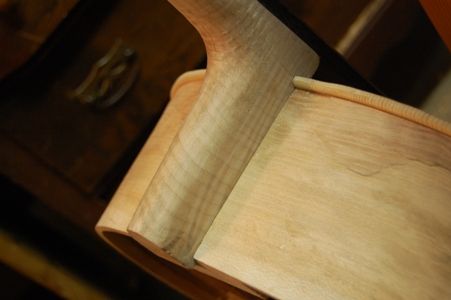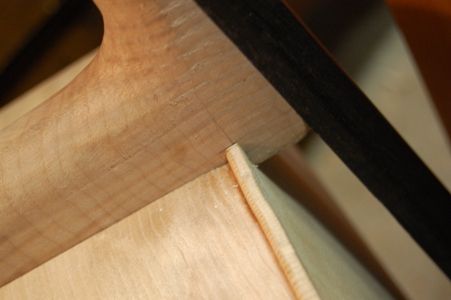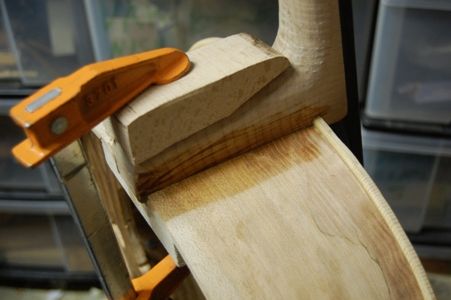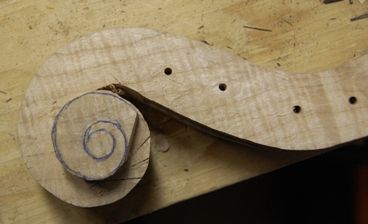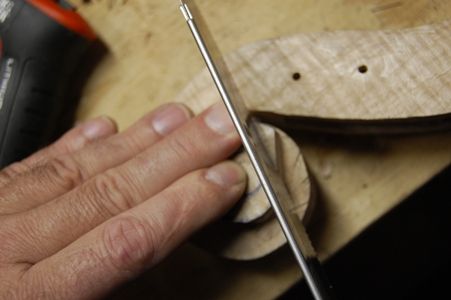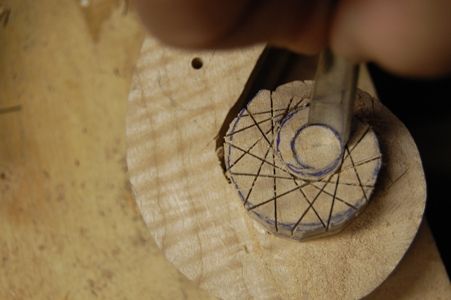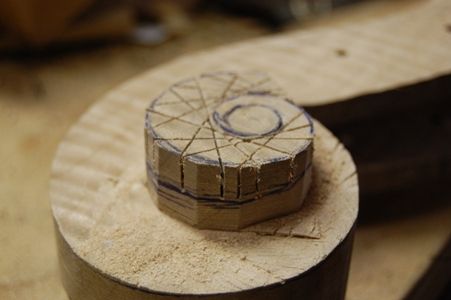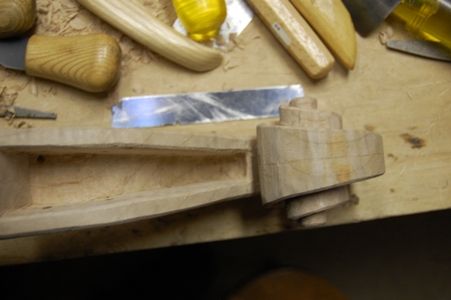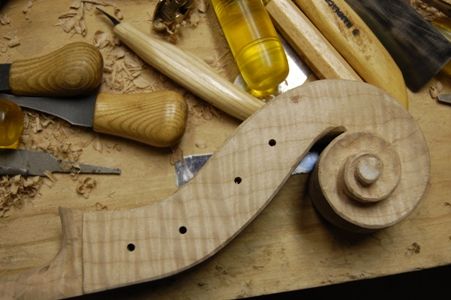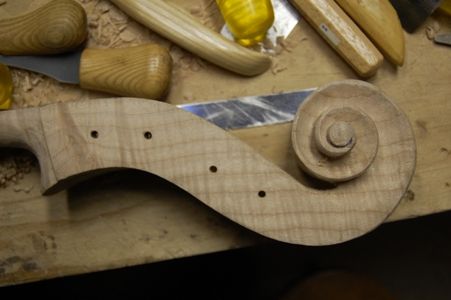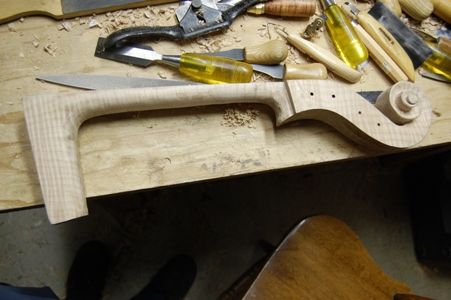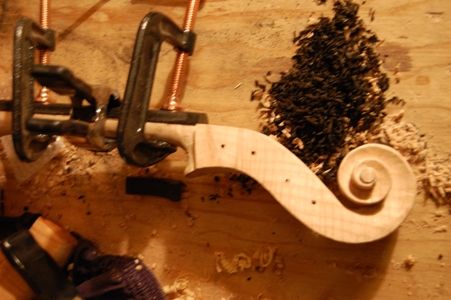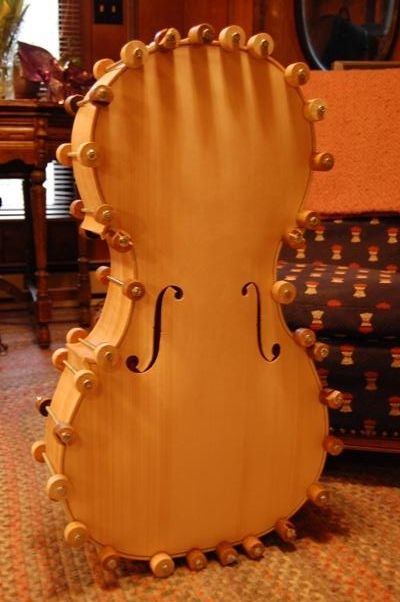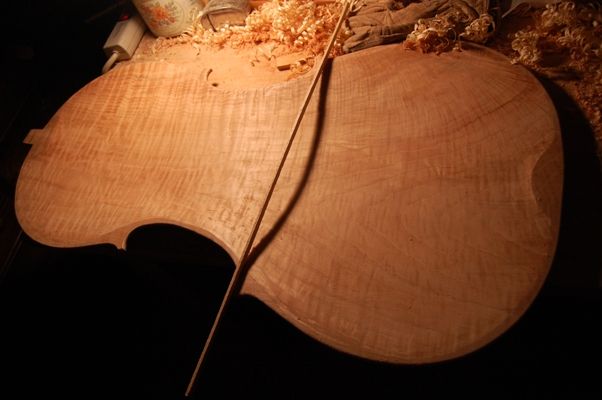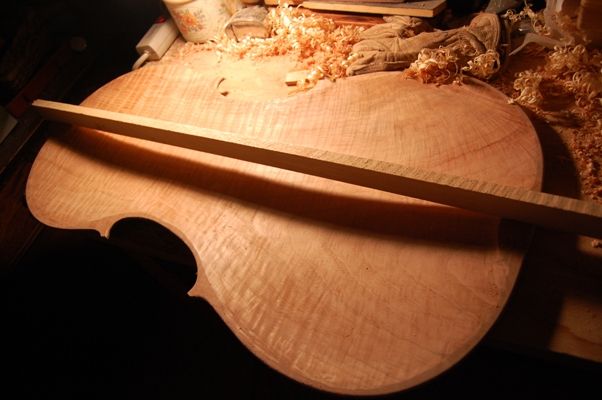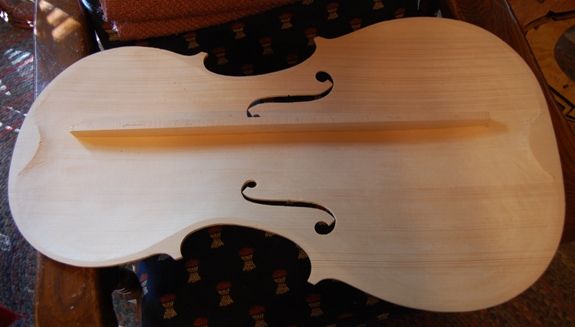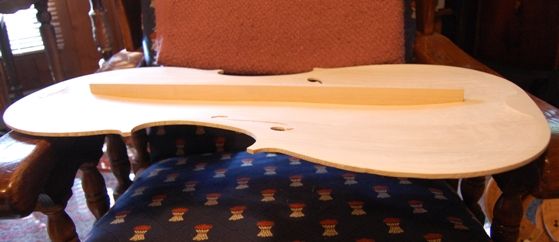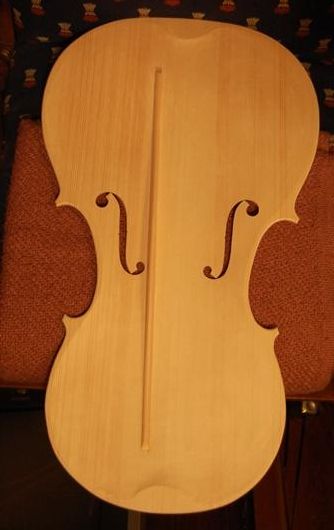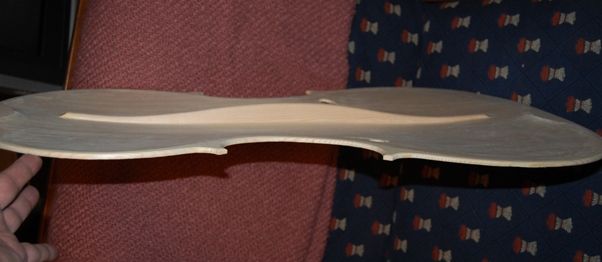Once the varnish is finished and dry, I complete the final assembly of the cello.
Adding the Saddle
I do something a little different with my saddles: it is not immediately obvious, but the left and right corners of the saddles frequently are a source of cracks in the front plate. Many luthiers combat this tendency by adding a small gap on each side of the saddle, to allow the plates to shrink a little without stressing those corners. I take it a step further, and actually eliminate the corners by putting a significant radius (maybe 10mm) on each corner, so that they are smoothly rounded. Sharp corners are a stress riser, and eventually a crack will form there. A rounded corner adds much less stress to the plate, and, as I also leave the small gap for shrinkage, I anticipate that there will never be a saddle crack in these instruments.
The saddle is cut all the way through the plate, so that it rests upon (and is glued to) the end block. It extends 30mm on each side of the center line and 12mm into the plate. The saddle provides a hard bearing surface for the tailgut to rest upon, so that it does not dig into the soft spruce of the front plate. It is about 12mm high (above the block) at its highest point, but the point is not centered; it is about at the forward third , so that the pressure of the tailgut is transferred directly down into the block, and does not cause the saddle to flip over in either direction.
Adding the Nut
There are two different styles of cello nut: one style allows the contour of the nut to match that of the fingerboard, around the corners, and drops down to about 5mm thick over the corners of the pegbox cheeks. The other follows the contour of the fingerboard, but then extends that contour in a smooth curve down to the corners of the pegbox cheeks, so that the nut follows a smooth arc all the way across. I have done the first way in the past. this time I chose the second. I think I like it.
The nut provides a hard bearing surface for the strings to rest upon, and provides a tiny clearance over the fingerboard, so that the end of the string length is a clean sharp edge, and makes a clear sound.
Installing the pegs.
Once the nut and saddle were glued in place, it was time to start the pegs. I had drilled the pilot holes before beginning the carving of the pegbox, so now all I had to do was to ream them to the correct size with a peg-hole reamer, then shave the pegs to match, using a peg shaver. It sounds easy, but it is fairly laborious and time consuming; Cello pegs are pretty big, and we are shaving off an awful lot of wood. Same for the holes…there is a lot of work in those four little holes. Once the pegs have been correctly fitted, they are treated with a peg-compound that provides a heavy, stiff lubrication…the peg is not supposed to either slip or stick…it should hold the tension of the strings without failing, but allow the player to adjust the pitch smoothly and easily. Once the pegs fit correctly, they have to be removed and trimmed to the appropriate length, the ends polished, and holes drilled for the strings.
Installing the end-pin
Finally, the end-pin hole had to be drilled and reamed, and the end-pin shaved to fit the hole. Pretty much the same procedure as the pegs, with the exception that it is fairly ticklish toward the end…one twist too far, and the end-pin will be loose (guess how I know). If that happens you can use a spiral bushing to shrink the hole back down a tiny bit, and save the day.
I began by using a 5/8″ spade bit to drill a hole all the way through the end block, precisely at the center of the end seam, and perpendicular to the surface, there. Then I used a large tapered reamer to enlarge it into a tapered hole ready to receive the end-pin assembly. The final hole was about 7/8″ diameter at the outer opening.
Other tasks
I did build some cello stands a few days ago, and a rack to hold violins and violas (I settled on a capacity of six instruments). I still have to stain and finish those items, so I can pad them all and have them ready for the upcoming show.
But the cello is essentially done. All that remains now is to cut the string slots in the nut, drill the pegs for strings, fit a bridge and soundpost, and set it up. (Simple, right?) Anyway, here is how it looks today:
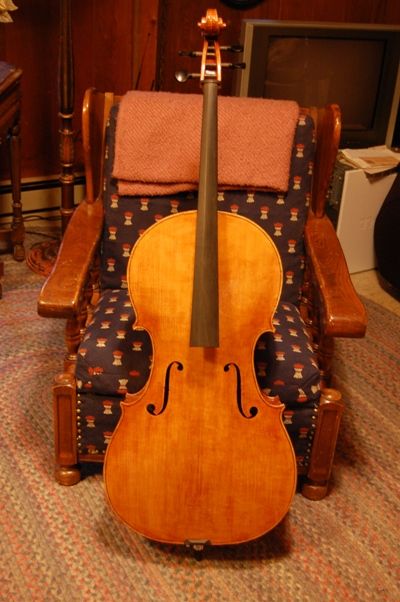
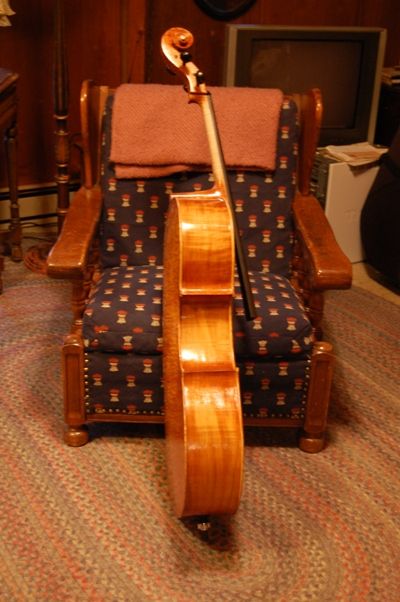
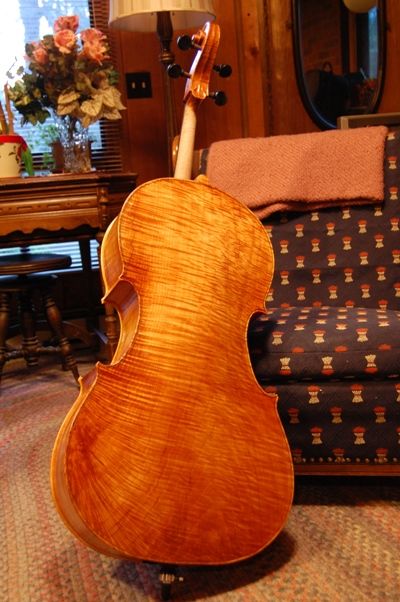
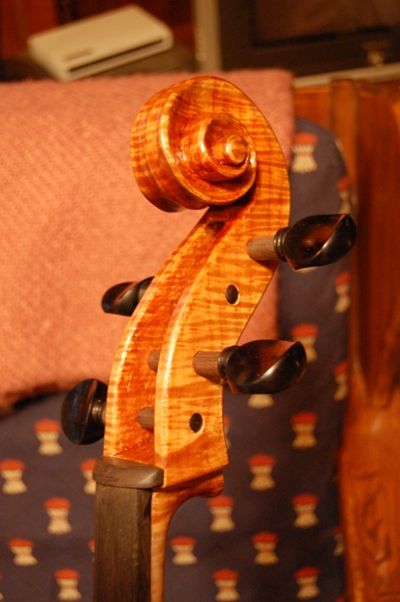
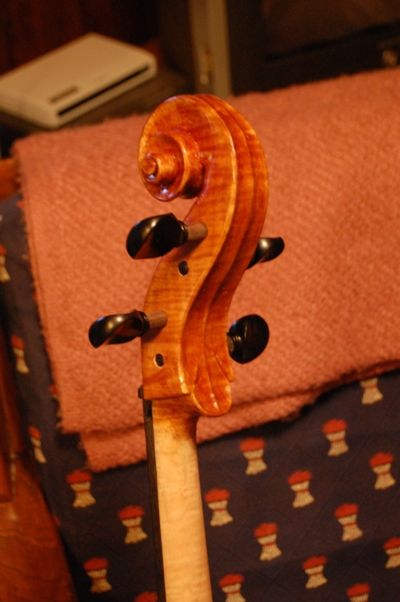
I will still have to give a final polish to all the ebony parts and the varnish, of course, but the cello is very nearly complete. After everything else, I will stain and add a light finish to the handle portion of the neck, so that it does not look so white, and will not pick up dirt too badly.
Here is the completed cello:
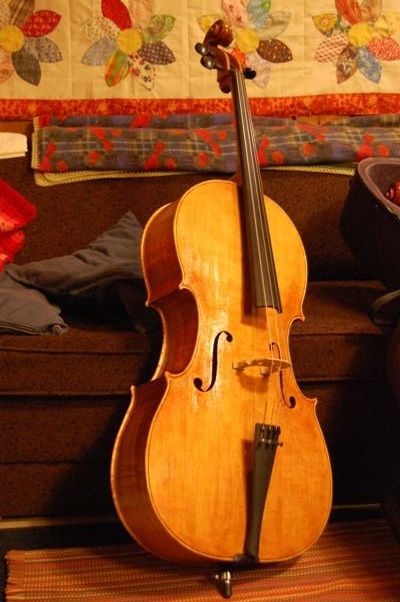
The cello plays very well, and I trust I will find a home for it. I am not surprised that it responds well– this is modelled after the 1712 “Davidov” cello, by Antonio Stradivari…and the original is in professional use by Yo Yo Ma, today. I feel good about that pedigree….
Follow @ChetBishop

 Follow
Follow


